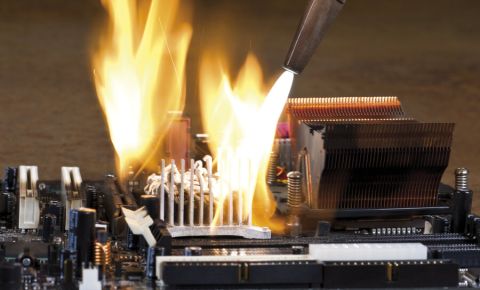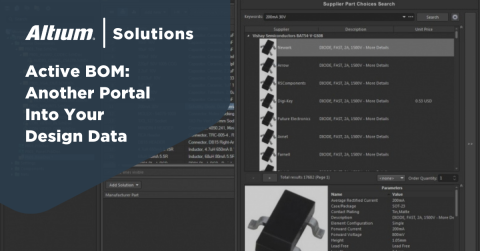A Complete Bill of Materials and Other Suggestions for Error Free PCB Manufacturing
Long before my youngest son became a teenager, we already knew that in everything that he did he worked at turning the situation around to best benefit himself. At one point he was doing something that he shouldn’t be doing, and I told him that if he continued down that path that I would ground him. Instead of backing off as I expected, he instead had a contemplative look on his face as he asked me; “for how long would I be grounded?” I couldn’t believe it; my 8 year old son was negotiating his punishment with me to see if it was worth it to break the rules.
We laugh at this story now, but that memory does come back to haunt me every now and then, especially when I’m tempted to over extend myself or cut a corner in order to get something done. How often do we try to get a printed circuit board design through manufacturing when we know that something isn’t right? Like my son we try to balance a hoped for outcome with the known hazards, and throw the dice anyway hoping to beat the odds. Making sure to stay within the boundaries of fabrication standards, design rules, and producing a complete bill of materials is still the best way to assure success in your PCB manufacturing. Let me tell you why.
Include Your Manufacturer from the Start as Your Design Partner
There is so much that has to be in place in order for your PCB to be successfully manufactured or even to work correctly. In this age of high speed and HDI designs, getting everything set up correctly has become even more important. The best minds in the business have said time and time again that you cannot correctly calculate your design parameters such trace widths for controlled impedance routing without knowing the physical board layer stack. And yet there are still design teams out there who will insist on doing it their way.
You have a great resource available to you that is just a phone call or Email away; your circuit board fabricator. They have the data that you need to best build your board. You can tell them what kind of design that you are working on, and they will give you all the options available for materials and processes to pick from.
In a recent design conference Rick Hartley once again stated the importance of working with your manufacturer from the start: “Engage early with your board fabricator and design your board to the specifications that they recommend. Don’t insist on changing what they do, find out their processes and design to that. This is what they do every day on a regular basis, and they are good at it.”
You may be tempted to break your design rules, but don’t cross that line
Design Rules; They’re There to Protect You, Not Make Your Job Harder
Have you seen the latest Jurassic World movie where the little girl inadvertently steps backwards over the red line on the floor getting her too close to the dinosaur in the cage? It almost grabbed her. Rules and barriers are there for a reason, they are to protect us. Your design rules are the same way, and yet many will decide to simply scrap a rule in order to get a design done sooner. “We can squeeze this one by the fab house” is often the last thing said before a design is rejected by the fab house and sent back for a correction.
Set up your design rules according to the technology that you are designing for and the fabrication processes of your manufacturer. Your rules should allow you to specify overall trace widths and spaces, net class widths and spaces, and specific areas for widths and spaces in addition to many other parameters. Make sure that these rules will adequately guide you and prevent you from inadvertently crossing that red line and making a huge mistake. And if you do absolutely just-can’t-finish-the-design-without-it have to cross that line, make sure to include your board fabricator on this decision up-front so that they can be prepared for it.
Bill of materials management software, like Altium’s Active , can really help
Make Sure That Your PCB Bill of Materials is Complete and Accurate
All too often, the bill of materials ends up being the last thing that someone throws together in order to get the design out the door. Your bill of materials should be a living document that is constantly being updated throughout the design cycle so that it is totally complete and accurate when the design is finished. It takes a PCB design CAD system that is built for this kind of parts management to handle it, and fortunately there are systems like this available to you.
Altium Designer is PCB design software that has this kind of bill of materials management software built into it. Active BOM is more than just a BOM generator tool; it works with you throughout the entire design process. As part of Altium’s signature unified design environment, Active BOM works seamlessly with both the schematic editor and the PCB layout tools giving you another portal into your design data. Active BOM also gives you a cloud connection with your preferred component vendors for up-to-date part pricing, availability, and specifications.
Active BOM can help you to stay on top of your design data, and generate an accurate and complete bill of materials to send to your PCB manufacturer. No matter what circuit boards you’re looking to push through to PCB fabrication, PCB assembly, and the rest of the manufacturing process, rest easy with an on-time delivery. Any PCB designer will be able to keep track of copper, components, and whatever solder mask is necessary for a circuit board with their PCB editor.
If you would like to find out more about how Active BOM and the whole suite of PCB design tools in Altium Designer can help you, talk to an expert at Altium.










